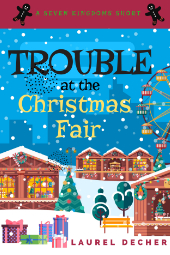
Reverse Backstory Tool – Becca Puglisi
Angela Ackerman’s and Becca Puglisi’s Reverse Backstory Tool in THE NEGATIVE TRAIT THESAURUS is the perfect way to jumpstart a new story or re-animate a faded character.
It’s not an eye-color checklist. It’s a way to discover the inside workings of your character that drive your story.
Take ten minutes to see what I mean. (Download it here.)
- Fill in:
- the character’s inner and outer motivations Hint: what the character wants (outer) links to why (inner) he or she wants it. In a middle grade story, maybe Penelope wants to buy school lunch (outer motivation) instead of bringing it from home. She wants to stand in line with her friends instead of sitting alone at a table waiting for them. (inner motivation)
- the positive trait(s) that will help the character achieve his or her goal. Penelope is CREATIVE and her creative problem-solving will help her reach her goal once she thinks of using her creativity in this way.
- the negative trait(s) that will get in the way. Penelope can be INATTENTIVE, especially by lunchtime, because there are so many things to think about.
- Add the character’s:
- wound–that painful happening in the past that made them who they are today. Penelope lost her lunch money twice and once a bully took it. Now her parents won’t send her to school with lunch money.
- lie–that automatic belief that gets in his or her way. The character must overcome this lie to grow into the hero who will triumph. Penelope believes she’s not good with money.
- Appendix A of THE NEGATIVE TRAIT THESAURUS suggests needs and the lies characters tell about them.
- Feel the tension. It sounds hokey, but once you’ve filled this out, your character is fleshed out because you’ve found the inner conflict. Once you have a “want” and a “need” pushing against each other, the character is kicking and struggling to get out of your imagination and into action.
- THE NEGATIVE TRAIT THESAURUS and THE POSITIVE TRAIT THESAURUS are fun and inspiring ways to find your raw ingredients. You can also find traits that will lead to built-in conflict in sidekick characters and villains. With characters like these, the story energy keeps building.
Does this sound too cookbook-y to you?
At first I also thought, “Oh, no, if all writers use these tools, we’ll all be writing exactly the same stories.”
Of course that isn’t true. If you’ve ever written from a prompt in a large group, you know 30 writers will come up with 30 totally different stories based on one writing prompt. If you’ve never done it, try it. It’s eye-opening.
Actually, these writerly catalogs free up my writer’s brain and let me riff at a much deeper level. They also make it a lot more fun.
Want another example? Read Becca Puglisi’s post for 7 more ways to use these excellent tools during drafting and revision.
Have you used any of these tools before? How did they work for you?
_______________
If you’d like to stay in touch, sign up for my Reader’s List. Once a month, I share new middle grade fiction, story-related freebies, and/or related blog posts. If it’s not your thing, you can unsubscribe at any time.
Save



